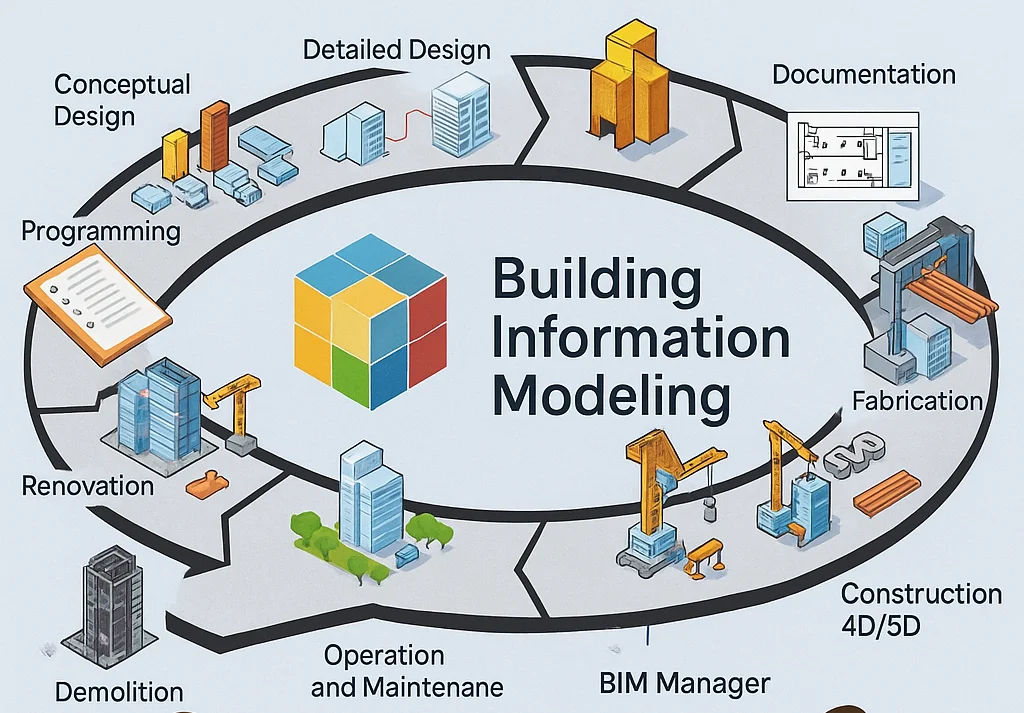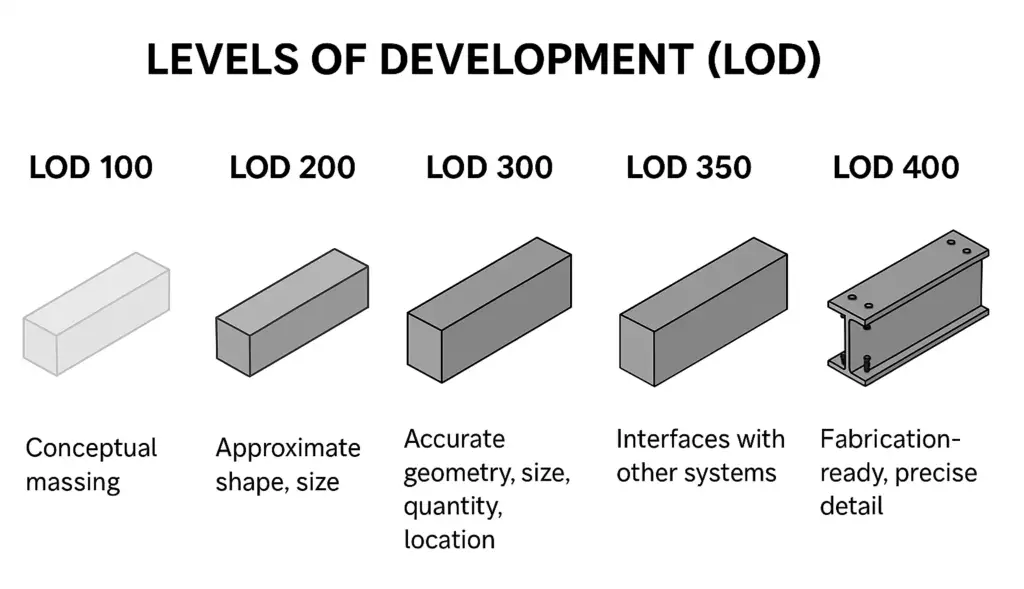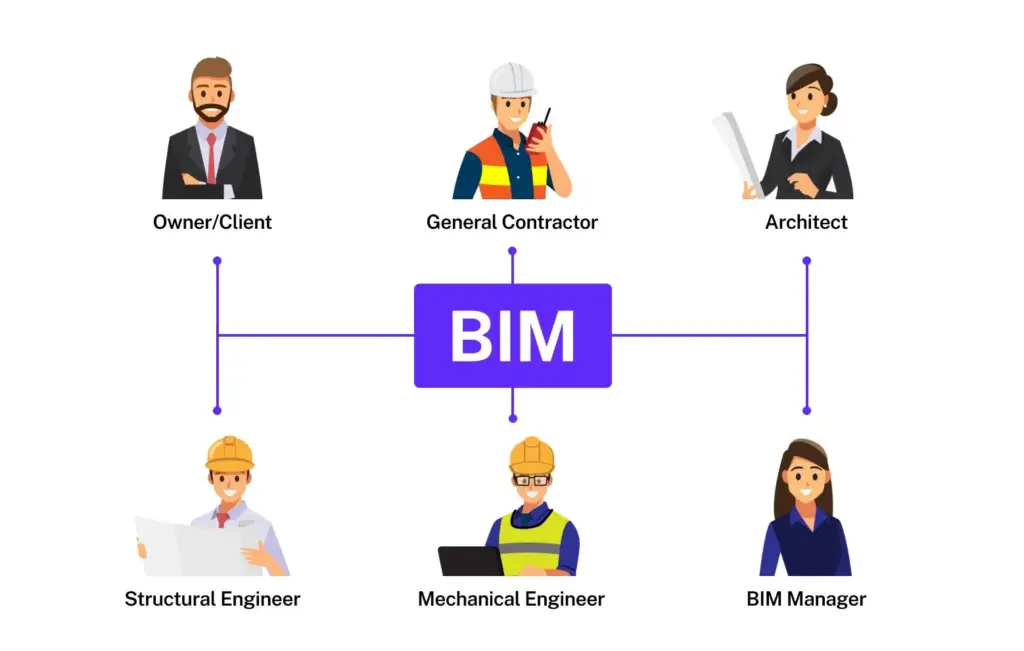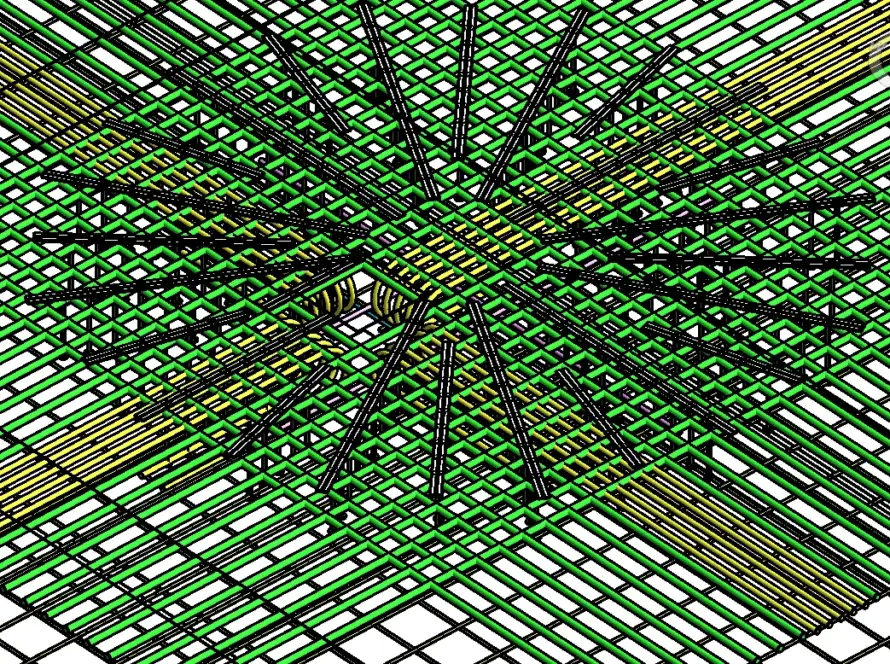BIM Modelling
Bringing Clarity to Construction Through Intelligent Modelling
At Skyscraper Creators, we provide advanced Building Information Modelling (BIM) solutions that enhance coordination, reduce rework and drive smarter construction outcomes. Our models serve as the digital foundation for your projects delivering accuracy, consistency and visibility from design to execution.
We create discipline-specific and integrated BIM models for structural, architectural, and MEP coordination, aligned with LOD standards and project requirements. Whether you’re working on a high-rise, infrastructure, or industrial facility, our BIM services empower teams with real-time insights and clash-free collaboration.
Our BIM offerings include
3D modelling for structures and reinforcement
Clash detection and resolution
LOD 100–500 model development
Coordination and shop drawing extraction
Quantity take-offs and model-based estimation
What is Building Information Modelling (BIM)?
Building Information Modelling(BIM) is a digital representation of the physical and functional characteristics of a facility. BIM supports decision-making across the lifecycle of a building from design and construction to operation and maintenance.
BIM = Building + Information + Modelling
- Building: The physical project (e.g., a building or infrastructure).
- Information: Data about geometry, components, manufacturer, warranty, energy usage, etc
- Modelling: The visual and interactive component objects can be manipulated and simulated.
Traditional Workflow vs BIM Workflow
| Category | Traditional CAD Workflow | BIM Workflow |
|---|---|---|
| Modelling | Separate 2D and 3D models, not linked | Intelligent 3D model with integrated data |
| Software | SketchUp, AutoCAD, Rhino (non-intelligent) | Revit, ArchiCAD, Tekla (intelligent) |
| Coordination | Document-based, error-prone | Model-based, coordinated, live updates |
| Collaboration | Sequential, siloed tasks | Integrated, collaborative team workflows |
Key Issues with Traditional Method
- Disconnected workflows between teams
- Rework due to uncoordinated documents
- Lack of central data and version control
Advantages of BIM Workflow
- Single source of truth for all data
- Central model supports multiple views (2D & 3D schedules)
- Enhanced coordination reduces errors and delays

Understanding BIM Dimensions
BIM evolves beyond 3D modelling. Each dimension adds a layer of data:
- 3D – Geometry (Visualization & clash detection)
- 4D – Time (construction scheduling)
- 5D – Cost (BOQ & cost estimation)
- 6D – Sustainability (energy analysis)
- 7D – Facility Management (asset data for operations)
Benefits of Using BIM
| Category | Details |
|---|---|
| Visualisation |
- Easy interpretation using 3D models - Design intent visible at early stages - Better communication with clients |
| Collaboration |
- Multidisciplinary teams can work together - Central model helps coordination - Early simulation supports accurate decision-making |
| Elimination of Waste & Risk |
- Clash detection avoids rework - Better quantity take-off and resource planning - Reduces manual documentation errors |
| Example Tools: | - Revit (Authoring), Navisworks (Clash detection), BIM 360 (Cloud coordination) |
BIM Implementation Strategy &
LOD Overview
How to Transition to BIM:
- Start with pilot projects
- Train staff on BIM tools and process
- Collaborate with BIM - enabled stakeholders
- Follow standards (e.g., ISO 19650)
| LOD | Description | Use Stage |
|---|---|---|
| LOD 100 | Conceptual – massing, location | Concept Design |
| LOD 200 | Approximate geometry & data | Schematic Design |
| LOD 300 | Accurate geometry & orientation | Design Development |
| LOD 350 | Includes interfaces & supports | Coordination/Construction Docs |
| LOD 400 | Fabrication-ready detail | Fabrication/Construction |
| LOD 500 | As-built model | Facilities Management |

Next Steps:
- Use BIM for early risk detection, precise planning and sustainable designs
- Focus on team communication, process integration and digital model quality
- Embrace tools and standards to ensure consistency
BIM is used in a range of applications:
- Architectural modelling
- Structural Detailing and Coordination
- MEP Clash Detection
- 4D Construction Simulation
- Tendering & Cost Control
- O&M Manual with Digital Twin

Creators We’re Empowering with Smart Solutions
Architectural & Structural 3D Modelling
Clash Detection & Coordination
4D & 5D BIM for Scheduling & Cost Management
Scan-to-BIM, CAD-to-BIM & As-Built Modelling
We convert data from point clouds, captured through laser scanning and photogrammetry, into intelligent, data-rich BIM models that reflect real-world conditions with high precision.
We also transform 2D CAD drawings into coordinated 3D BIM models, enabling digital collaboration, better visualisation, and enhanced project planning.
Facility Management Integration
We integrate BIM models with key facility data including MEP systems, material specifications, warranty details and operational metadata to support lifecycle management and sustainable building performance.
Our models are developed in alignment with ISO 19650 standards, ensuring structured information delivery and seamless integration into facility management systems.
These intelligent models are ideal for renovation, retrofitting and facility operations, enabling informed decision-making, improved efficiency and long-term asset reliability.
What Sets Skyscraper BIM Apart
LOD 100 to 400 Accuracy
Industry-standard software
Interdisciplinary Collaboration
Time & Cost Optimization
Global BIM Delivery Capability
Our BIM Modelling Workflow
At Skyscraper Creators, our BIM process is structured to deliver clarity, coordination and constructability at every stage of the project. We blend technical expertise with practical site understanding to ensure your digital model adds real value on the ground.
Support & Maintenance for Asset Management
We assist clients in leveraging BIM for facility management, asset tracking and lifecycle planning, helping transform models into valuable long-term tools for operations and maintenance.
Delivery & Digital Handover
We deliver fully coordinated BIM models via secure Common Data Environments (CDEs) in native and IFC formats, ensuring easy integration with project stakeholders and downstream platforms. All deliverables adhere to the agreed LOD standards and information requirements.
4D & 5D BIM Integration
We integrate time (4D) and cost (5D) data into the BIM model to support construction sequencing, planning and budgeting enabling smarter decisions and improved control on site.
Coordination & Clash Detection
We conduct multi-disciplinary clash detection and design coordination, helping to prevent design conflicts, reduce rework and support smooth project execution.
Model Development & Structuring
Our team builds clean, data-rich 3D models focused on structural systems and reinforcement, structured for clarity, consistency, and downstream usability.
Requirement Analysis & BIM Scope Definition
We begin by defining the project’s BIM goals, LOD expectations, coordination scope and integration requirements establishing a clear BIM Execution Plan aligned with stakeholders.

